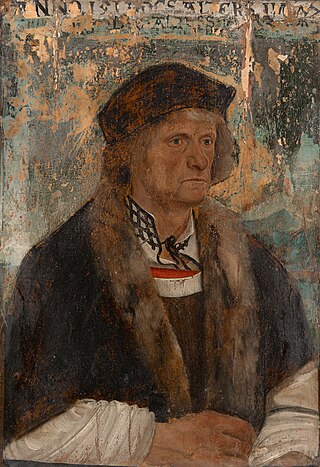
Johann Amerbach was a celebrated printer in Basel in the 15th century. He was the first printer in Basel to use the Roman type instead of Gothic and Italian and spared no expense in his art.

Johann Froben, in Latin: Johannes Frobenius, was a famous printer, publisher and learned Renaissance humanist in Basel. He was a close friend of Erasmus and cooperated closely with Hans Holbein the Younger. He made Basel one of the world's leading centres of the book trade. He passed his printing business on to his son, Hieronymus, and grandson, Ambrosius Frobenius.

The Lentos Art Museum is a museum of modern art in Linz, Austria, which opened in May 2003 as the successor to the Neue Galerie der Stadt Linz.
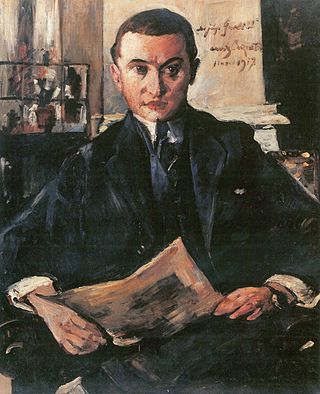
Wolfgang Gurlitt was a German art dealer, museum director and publisher whose art collection included Nazi-looted art.

The history of the Jews in Switzerland extends back at least a thousand years. Jews and Judaism have been present in the territory of what is now Switzerland since before the emergence of the medieval Old Swiss Confederacy in the 13th century.

The Kunstmuseum Basel houses the oldest public art collection in the world and is generally considered to be the most important museum of art in Switzerland. It is listed as a heritage site of national significance.

Johann Rudolf Wettstein was a Swiss diplomat and mayor of Basel, who achieved fame through his diplomatic skills, culminating in Swiss independence from the Holy Roman Empire in 1648.

Jakob Meyer zum Hasen was the bürgermeister of the city of Basel from 1516 to 1521. A money changer by profession, he was the first bürgermeister of Basel to be a tradesman, belonging to a guild rather than a member of the aristocracy or a wealthy family. He is known as a patron of the painter Hans Holbein the Younger, having commissioned the Darmstadt Madonna and a double portrait from him.
The Amerbach Cabinet was a collection of artifacts, paintings, libraries, assembled by members of the Amerbach family, most notably by the two law professors of the University of Basel, Bonifacius Amerbach and his son Basilius Amerbach the Younger.
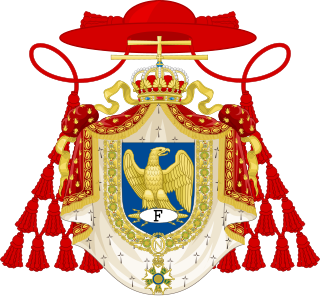
Faesch, also spelled Fesch, is a prominent Swiss, French, Belgian, Corsican and Italian noble family, originally a patrician family of Basel. Known since the early 15th century, the family received a confirmation of nobility from the Holy Roman Emperor in 1563. It was continuously represented in the governing bodies of the city-republic of Basel for centuries, and three members served as Burgomasters, i.e. heads of state, namely Remigius Faesch (1541–1610), Johann Rudolf Faesch (1572–1659) and Johann Rudolf Faesch (1680–1762). The family was at times the richest family of Basel, and its rise was partially the result of clever marriage policies.

Basilius Amerbach was a lawyer, professor and collector from Basel. He was the only son of Bonifacius Amerbach.
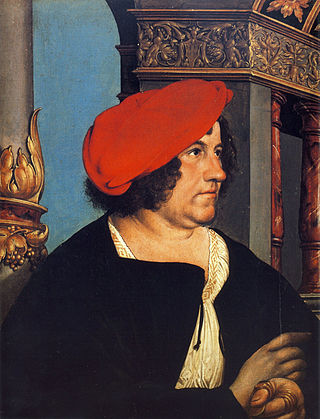
The Double Portrait of Jakob Meyer zum Hasen and Dorothea Kannengießer is a 1516 oil on limewood panel painting by Hans Holbein the Younger. The two panels were commissioned by Jakob Meyer zum Hasen, mayor of Basel, and show him and his second wife Dorothea Kannengießer. The occasion for the portrait could be Meyer zum Hasen's election as the mayor the same year. Holbein was eighteen years old at the time and had arrived in Basel together with his brother Ambrosius only in 1515. He signed with the letters HH. He only received the right to sign with his full name in 1519, when he was accepted as a member of the painters' guild of Basel. They are the earliest surviving portraits by the artist and are linked to drawings he may have made in his hometown of Augsburg. The painting came into possession of the Faesch Museum founded by Remigius Faesch who was married with Rosa Irmi, a granddaughter of Jakob Meyer zum Hasen. It was exhibited in the Museum Faesch until 1823, today both panels are exhibited in the Kunstmuseum Basel.
Johann Rudolf Faesch was a Swiss silk merchant, politician and diplomat from Basel. He was part of several Swiss diplomatic missions and held numerous high offices of the city. In 1630 he became head of the guild and from 1636 to his death in 1659 he was Burgomaster of Basel alongside his rival Johann Rudolf Wettstein. Faesch led the council's pro-French faction while Wettstein led the pro-Confederacy faction.

Von der Mühll or Von der Mühl is a Swiss patrician and noble family.

Maja Sacher was a Swiss art collector and philanthropist.

Anita Fetz is a Swiss politician of the Social Democratic Party of Switzerland (SP) and a former member of the National Council and the Council of States in Switzerland.
Eduard Sturzenegger was a Swiss manufacturer and art collector.
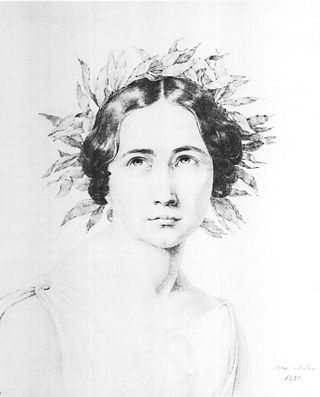
Emilie Linder was a Swiss painter and art patron.
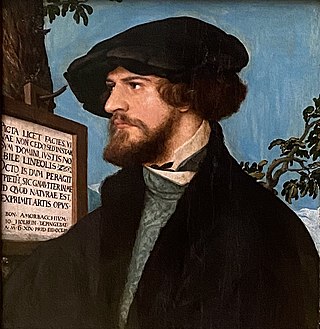
Bonifacius Amerbach was a jurist, scholar, an influential humanist and the rector of the University of Basel for several terms.

The Portrait of Bonifacius Amerbach is a painting by the German master of the Renaissance Hans Holbein the Younger. It is deposited in the Basler Kunstmuseum as part of the Amerbach Cabinet. It is painted in tempera on pinewood and measures 29 cm x 27 cm.
















